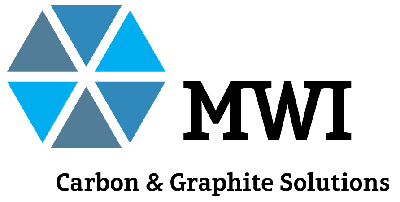An Inside Look at How Our Customer, Atalys, Utilized MWI’s Graphite Grades
Company
Atalys, an industry-leading medical device manufacturing platform of the world’s most trusted brands.
Overview
Atalys faced a challenge in producing a feature with a width as thin as 0.006″ on graphite electrodes. The existing electrode material, EC-17, was found to be too brittle and prone to chipping during the machining process, raising concerns about the overall efficiency and quality of the manufacturing process.
Challenge
The issue revolved around the hardness of EC-17 graphite when used to create electrodes for features with extremely thin ribs. The chipping during the machining process was impacting the overall productivity and success rate of manufacturing these intricate components.
Solution
After identifying the issue, Atalys explored alternative graphite grades that would better suit the requirements of the thin-rib application. The recommended solution involved considering HK-6 or HK-6C (copper impregnated) as replacement grades for EC-17. Atalys chose to utilize HK-6C, a copper impregnated graphite. This choice ensured that the electrode maintained its integrity, unlike plain graphite, preserving the geometry from electrode to steel.
Interested in learning more about MWI’s graphite grades?
DOWNLOAD OUR EDM GRAPHITE PRODUCT GUIDEAdvantages
- HK-6 boasts super-fine material with a high flexural strength, making it less prone to the brittleness observed in EC-17. This characteristic is crucial for maintaining structural integrity during the machining process, especially when dealing with thin-ribs.
- In HK-6C, the presence of copper enhances support and rigidity in fine details, aiding in machining, burning, and electrode wear. This feature is particularly advantageous when working with small, intricate designs.
Balanced Properties
The issue revolved around the hardness of EC-17 graphite when used to create electrodes for features with extremely thin ribs. The chipping during the machining process was impacting the overall productivity and success rate of manufacturing these intricate components.
Outcome
By considering alternative graphite grades and selecting HK-6C based on the specific needs of the thin rib application, MWI aims to address the brittleness issue and enhance the overall performance of the machining process. This strategic shift in electrode material selection demonstrated a proactive approach to solving manufacturing challenges and optimizing processes for intricate component production.
To assist in the decision-making process, MWI provides a graphite material specification sheet and guide detailing the properties of each graphite grade. The focus is on comparing flexural strength, hardness, density, and resistivity as these were identified as the key properties influencing the suitability of the electrode material for the thin-rib application.
DOWNLOAD FULL CASE STUDY

